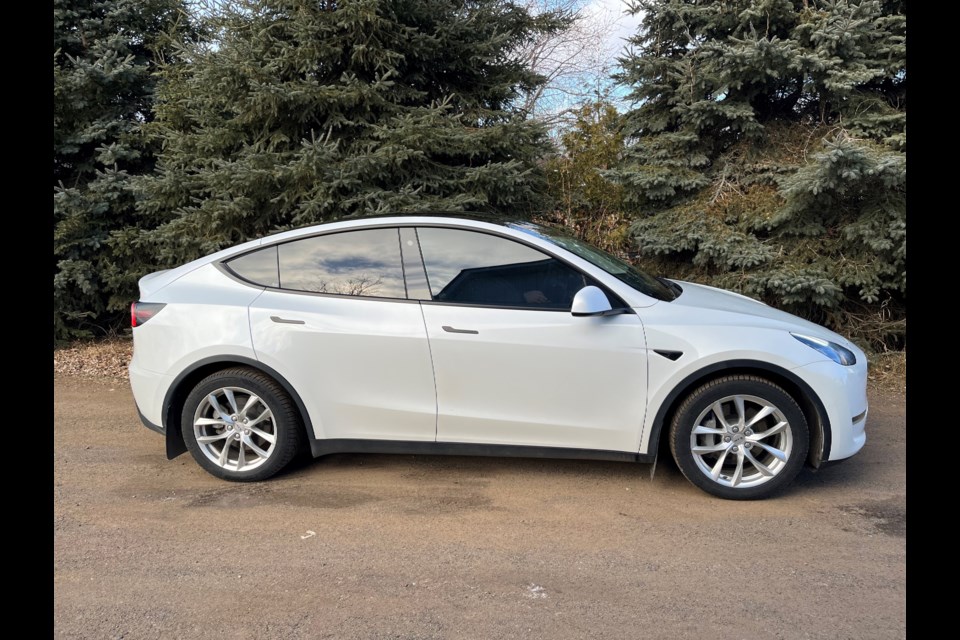THUNDER BAY – The move to electric vehicles is happening, no matter who is in power in Toronto or Ottawa.
That’s the opinion of Ken Shields, an organizer with the Electric Vehicle Association of Northern Ontario, when discussing the accelerated plan to phase out sales of gas-powered cars and trucks by 2035 announced by the federal government on Tuesday.
Shields and his wife are going through their third winter with their 2021 electric vehicle and feel it is feasible to drive the vehicle in Northern Ontario.
“It's quite amazing how you can start the vehicle up [in the garage] while you're in the house [staying warm],” added Shields. “Traveling in the wintertime is a bit of a challenge; we have snow tires of course, but the range [of travel] is reduced for all vehicles because the air is denser. The range [of the battery] is reduced to about 30 per cent, [which means] we don't skip a charging station, which is fine for us because one needs to stop [to empty] bellies and bladders. While you're taking care of that, the car is getting juiced up and ready to go for the next stop. So, it's easily mitigated.”
Over the next 12 years, automakers will have to work toward moving away from combustion engine cars, trucks and SUVs, and gradually increase the proportion of electric models they offer for sale each year.
Shields acknowledged there need to be more charging stations, especially along Highway 11, a point echoed by Mayor Wendy Landry of Shuniah, who is also the president of the Northwestern Ontario Municipal Association (NOMA).
“Kudos to the [federal] government for heading towards [addressing] climate change and making these kinds of changes, but definitely there's a logistical problem attached and like we always say, one size doesn't fit all,” Landry said. “This past weekend, our highways were closed longer than they were open over a three-day span, and the traffic [was backed up] on Highway 11/17.
"What if we had 100 per cent electric vehicles in those lineups? What would we have done? I just can't imagine that we will have the ability to put the infrastructure in in the time frame [that’s been set out]. I just think there's a lot of homework to do and a lot of thinking to do when it comes to developing infrastructure to meet those goals.”
Landry mentioned that there have been discussions about putting in quick rest stops, like the ONroute locations in the southern part of the province.
“If you drive the 400 series [of highways] down [there] you'll see stop stations everywhere,” mentioned Landry. “Obviously we don't have them and infrastructure and power are a problem. Obviously there [are] challenges, but it's definitely something that we keep on the radar that to be able to have those top stations along the way is good for safety. It's a good opportunity and maybe the stop stations as well as the charging stations [could go together].”
Patrick Trevisanutto, managing partner of the Halfway Motors Group, feels that local sales of electric vehicles took a dip once the Progressive Conservatives took office in 2018 and ended an EV rebate program.
“We've already been selling electric cars for the past decade,” he said. “[That said] we're still primarily full gas and internal combustion engine, electric vehicle sales fell off a cliff when the Ontario government stopped the rebate. They [have] picked up a little bit with the federal rebates in place. But at this point, there's a lack of consumer confidence in electric vehicles unfortunately, and a lot of that comes down to the pricing point on them and the lack of rebates available through the provincial government.”
Ontario is one of four provinces that doesn’t have a provincial rebate to buy an electric vehicle. The province previously offered rebates of up to $14,000.
